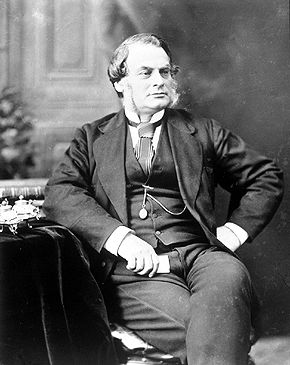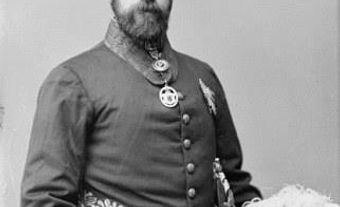
Origins
Dominion comes from the Latin dominus, which means master. The term Dominion — that which is mastered or ruled — was used by the British to describe their colonies or territorial possessions. It was used for centuries before the word was formally applied to the new nation of Canada. For example, Britain’s American colonies were often referred to as the Dominion of New England. Today, the nickname of the State of Virginia remains the “Old Dominion” — a title conferred by King Charles II in the mid-17th century.
Confederation
In the conferences and negotiations that brought about Confederation, the Fathers of Confederation wanted to call the new country (which then consisted of Nova Scotia, New Brunswick, Quebec and Ontario) the “Kingdom of Canada.” But the British government feared that this imperial-sounding name would offend the Americans. After the stresses of the American Civil War, Britain was anxious not to antagonize the United States and insisted on a different title.
New Brunswick’s Sir Leonard Tilley suggested “Dominion of Canada.” Tilley was reportedly inspired by the passage in the Bible from Psalm 72:8, referring to God’s dominion: “He shall have dominion also from sea to sea, and from the river unto the ends of the earth.”
The term Dominion was accepted. It was used several times in the British North America Act, the basis of Canada’s Constitution, in 1867. (See also: Constitution Act, 1982.) The phrase “Dominion of Canada” does not actually appear anywhere in the document. However, the word Dominion does appear several times, including in the BNA Act preamble:
“Whereas the Provinces of Canada, Nova Scotia, and New Brunswick have expressed their Desire to be federally united into One Dominion under the Crown of the United Kingdom of Great Britain and Ireland, with a Constitution similar in Principle to that of the United Kingdom...”

Canada and Other Dominions
Some of Britain’s other self-governing colonies, such as New Zealand, were also given the formal title of Dominion. By the early 20th century, the term “dominions of the British Empire” was informally used to refer to Canada, Newfoundland, Australia, New Zealand, the Irish Free State and South Africa. (See also: Commonwealth.)
In 1931, the Statute of Westminster was passed by the British parliament. It more formally conferred “dominion” status on these six countries. It described them not as colonies, but as independent countries. They were equal to Britain, but “united in free association (as) members of the British Commonwealth of nations.”
Dominion Day
For the first decade following Confederation, some provinces (including Ontario, Quebec and Nova Scotia) observed Dominion Day as a de facto holiday. In May 1869, a bill to make Dominion Day a public holiday was debated in the House of Commons. However, it was withdrawn after several members of Parliament voiced objections. A more successful effort was sponsored by Senator Robert Carrall of British Columbia. It was passed by Parliament in 1879, making Dominion Day a public holiday.
In 1958, at the urging of Prime Minister John Diefenbaker, Secretary of State Ellen Fairclough organized a Dominion Day celebration on Parliament Hill. By celebrating Dominion Day on an annual basis, Diefenbaker hoped to revitalize awareness of Canada’s British heritage and reverse a recent trend of phasing out the use of the word Dominion.
In the decades following the Second World War, several private members’ and government-sponsored bills were proposed to change the name of Dominion Day, but none succeeded. In July 1982, a private member’s bill to change the name to Canada Day was proposed by Vaudreuil MP Hal Herbert. The bill quickly passed through the House of Commons and was ratified by the Senate in the fall.
Patriation of the Constitution, 1982
When the Canadian government patriated its Constitution from Britain in 1982, the word Dominion did not appear anywhere in the new Constitution Act, 1982. It also did not appear in the Charter of Rights and Freedoms.
Even so, the old BNA Act (now called the Constitution Act, 1867) remains a part of Canada’s comprehensive Constitution, along with the 1982 statute. As such, Dominion of Canada remains the country’s formal, if seldom used, national title.

 Share on Facebook
Share on Facebook Share on X
Share on X Share by Email
Share by Email Share on Google Classroom
Share on Google Classroom


